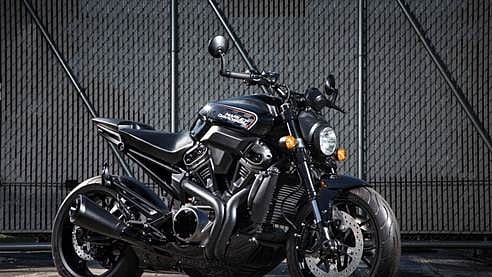Harley-Davidson’s rough ride in India
ADVERTISEMENT

The year 2020 just got worse for India’s biking community, already forced to spend a chunk of the year indoors. Cult bike maker Harley-Davidson has decided to stop manufacturing its products in India after 11 years of operations in the country.
The American company on Thursday said that it was dropping the curtain on its manufacturing facility in Haryana’s Bawal and “significantly reducing” the size of its sales office in Gurugram. Calling it a part of its “Rewire” strategy, the company said it is changing its business model in India and evaluating options to continue to serve its customers. This will involve overhauling its operating model and market structure in the country. This is a part of the company’s strategy under its new chief executive officer Jochen Zeitz, who plans to gain more profits by reducing Harley-Davidson’s product portfolio by 30% and investing in 50 markets—including North America, Europe, and parts of Asia Pacific—which have better growth potential.
India, the largest two-wheeler market in the world where 21.19 million units were sold in 2019, accounts for less than 5% of the company’s total sales volume. For example, the company sold 1,513 units in India in FY19.
“The company is communicating with its customers in India and will keep them updated on future support. The Harley-Davidson dealer network will continue to serve customers through the contract term,” the company said in a statement. There are around 30 Harley-Davidson dealerships in India spread across 15 states.
“These actions are aligned with The Rewire which is planned to continue through the end of 2020, leading to The Hardwire, a new strategic plan for 2021-2025 aimed at building desirability for the Harley-Davidson brand and products,” it said.
Of the $75 million in restructuring expenses that Harley-Davidson expects to incur, 80% is expected to be cash expenditure, including one-time termination benefits of approximately $3 million, non-current asset adjustments of approximately $5 million, and contract termination and other costs of approximately $67 million, the company said in a regulatory filing. This will include letting go of 70 people in India.
December 2025
The annual Fortune 500 India list, the definitive compendium of corporate performance, is out. This year, the cumulative revenue of the Fortune 500 India companies has breached $2 trillion for the first time. Plus, find out which are the Best B-schools in India.
Auto experts say that in a high-volume but low-margin market like India, it is difficult for a brand like Harley-Davidson to thrive. The reasons for the company’s exit range from its inability to form local partners, and drive up volumes due to high taxes, to the global slowdown, and competition from home-gown brands such as Royal Enfield.
“India is a world leader in the motorcycles market without doubt but the characteristics are very different. Interest in high-powered premium bikes is still evolving and demand is a function of the demography and the potential buying power. Added to this is the high rate of tax which takes them out of reach of a significant number of bike fans,” Sridhar V., partner and practice leader at Grant Thornton India, said.
India is considered to be one of the toughest markets for foreign automakers, with high import duties adding to the challenge. U.S. President Donald Trump had highlighted India’s high taxes, especially with reference to Harley-Davidson bikes, because of which customers end up paying twice as much for the vehicles. Even when India’s import tariffs were slashed by 50%, the brand continued to struggle in a highly competitive market.
In 2017, General Motors pulled out of the country while Ford moved most of its assets into a joint venture with Mahindra & Mahindra last year. Another reason why Harley-Davidson wasn’t doing well was due to its cost structure. Pricing is key for the domestic market. Eicher Motors’ Royal Enfield’s bikes start at ₹1.16 lakh, while Kawasaki’s Ninja 300 ABS sells at ₹2.98 lakh, and BMW’s G 310 sells at ₹2.99 lakh. In comparison, the cheapest Harley-Davidson, the Street 750, retails for ₹4.69 lakh in India. The company tried to work around this in August last year by floating the idea of introducing lighter 250cc-500cc bikes which would appeal to young buyers in India—the largest two-wheeler market in the world. But that didn’t take off.
The company has had a torrid time in recent months. It reported a loss of $92 million for April-June quarter, its first quarterly loss in over a decade, reports said. Zeitz, who is also the president and chairman of the company and took over in March, has said that Harley-Davidson would focus on core products and withdraw from underperforming markets. The iconic bike maker is banking on the German executive to turn its fortunes around. Zeitz, who at 30 became the CEO of sports apparel brand PUMA in 1993, transformed it from “near bankruptcy into one of the top three sporting goods brands in the world over his 18-year leadership”, reads his bio on the Harley-Davidson website.
Over the past few years, Harley-Davidson has been trying to grow its appeal beyond its traditional customers—the baby boomer generation of the U.S. As part of the plan, they have launched bikes with a smaller engine capacity and all-electric versions. It also introduced the all-electric LiveWire, which was Harley-Davidson’s attempt at catering to millennials and a younger audience. But it had to halt production of its premium electric motorcycle due to an issue with the vehicle’s battery charging system.
In 2009, Harley-Davidson had started the plant in Bawal, Haryana—its second such plant outside the U.S., after Brazil—where it tied up with about 50 suppliers to make for India. Five of the company’s 15 models—including the Sportster, Dyna, Softail, and Street 750—used to be assembled at the 70,000 sq. ft. facility. But the plant stands shuttered now, marking an end to Harley-Davidson’s decade-long stay in India.
